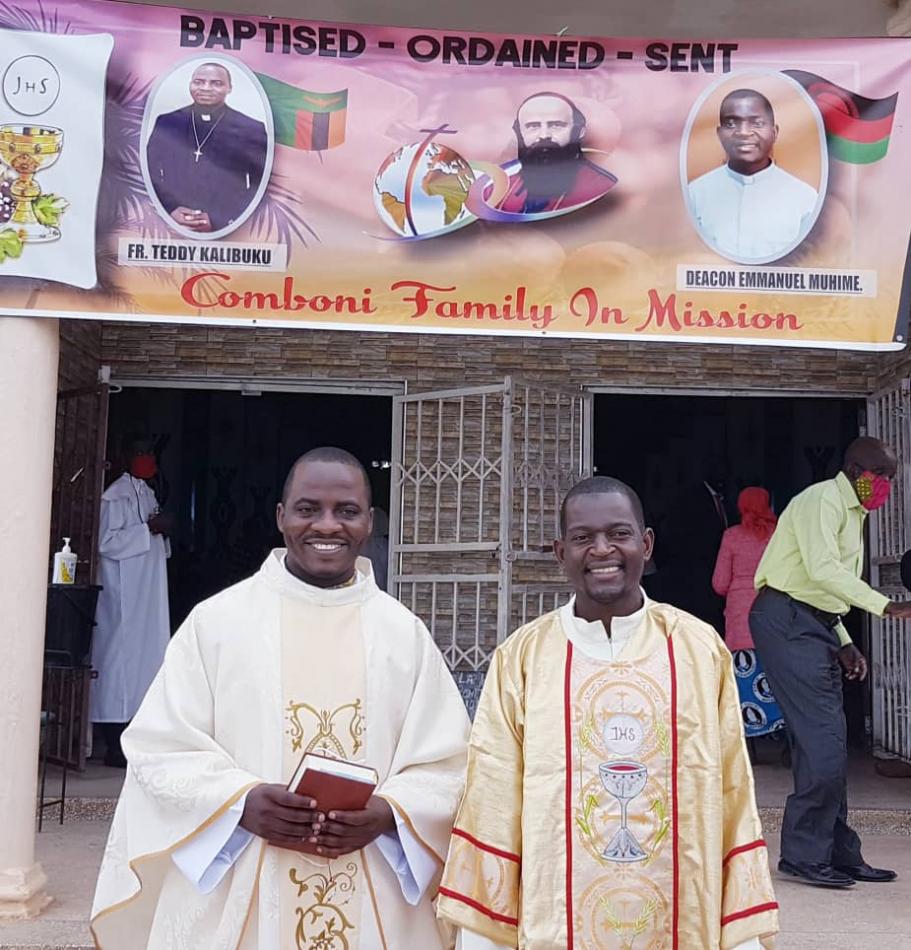Comboni Missionaries
in Malawi & Zambia



On 1 June 1867, Comboni decided
to open a training center which conducted seminars for clerics in Verona to be
used in African missions: as a reference model for the organisation of the
community, the Paris Foreign Missions
Society was chosen as a company of priests and lay brothers,
without religious vows, but with an oath of loyalty and belonging to
the community. The leadership and teaching in the institute were entrusted to
the Jesuit.
The missionary society,
originally called the children of the Sacred Heart of Jesus, was approved as
a congregation of diocesan
right on 8 December 1871.
On 31 July 1877, Comboni was
named apostolic Vicar of Central Africa and moved to Khartoum,
where he died in 1881. With the founder's death, his company entered a phase of
precariousness: the Mahdist War prevented missionaries from continuing their
mission to Sudan.
Francesco Sogaro, Comboni's first successor, transformed the society into a
congregation of simple vows in 1885, but older members did not accept the
decision because they believed that religious practices would distract the
missionaries from the active apostolate. Only the decision of the Sacred Congregation for
the Propagation of the Faith, which approved Sogaro's choice, ended
the internal conflicts of the institute.
With the Anglo-Egyptian victory
over the Mahdists, the Comboni Missionaries could resume their mission to
Sudan. The congregation received the Papal Decree of Praise on
7 June 1895. Since the congregation was now mature and self-sufficient, Antonio Maria Roveggio, successor to Sogaro, in 1899 took on the responsibility of formation of new missionaries from the Jesuits. On 19 February 1910, the Holy See finally approved the institute and its constitutions.
The founder, beatified in 1996,
was proclaimed a saint by Pope John Paul II on 5 October 2003.
Activity
and expansion
The Comboni Missionaries dedicate themselves to the missionary apostolate to the populations
that are not yet or not sufficiently evangelized, especially in Africa. They are present in Europe
(Austria, France, Germany, Ireland, Italy, Poland, Portugal, United Kingdom,
Spain), Africa (Benin, Central African Republic, Chad, Democratic Republic of
Congo, Ghana, Egypt, Eritrea, Ethiopia, Malawi, Mozambique, South Africa, South
Sudan,Sudan, Togo, Uganda,
Zambia), in the Americas (Brazil, Canada, Chile, Costa Rica, Ecuador, El
Salvador, Guatemala, Mexico, Nicaragua, Peru), and Asia (Philippines, Macao,
Taiwan).
The Mother House is in Via
Luigi Lilio in Rome. At the end of 2008, the
congregation had 328 houses with 1,803 religious, 1,296 of whom were priests.